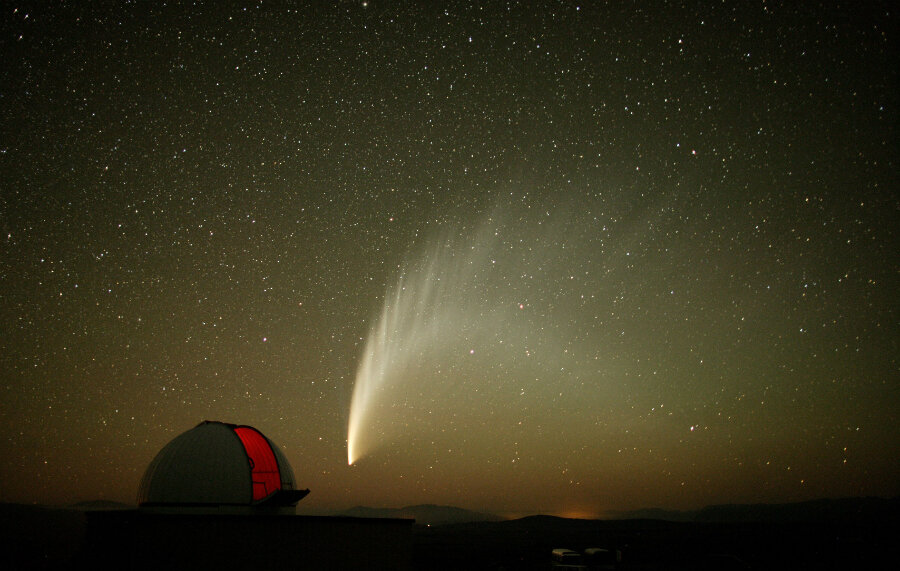Comet watch: Look for the first comet of 2017 this week
Loading...
Stargazers who missed the New Year’s Eve comet will have two more chances in the coming weeks to watch orbs streak across the sky, according to a statement NASA issued last week.
An icy comet – C/2016 U1 NEOWISE – will likely be visible with a pair of binoculars in the pre-dawn sky this week. Another near-Earth object – 2016 WF9 – is expected to pass by Earth in late February, although it is rather dark, not reflecting much light, said NASA.
The traveling objects are among the 110 near-earth objects (NEO) NEOWISE, an infrared telescope orbiting Earth, has detected since NASA repurposed it in 2013 to hunt and characterize asteroids and other NEOs. The newest comet is remarkable because of its visibility from the planet, while 2016 WF9 shows the blurred lines between asteroids and comets.
The comet visible this week is on its way near the sun before it starts its journey out of the solar system. Detected by NEOWISE in October, the comet will likely be visible in the southeastern sky for observers in the Northern Hemisphere.
The comet "has a good chance of becoming visible through a good pair of binoculars, although we can't be sure because a comet's brightness is notoriously unpredictable," Paul Chodas, manager of NASA's Center for Near-Earth Object Studies at the Jet Propulsion Laboratory in Pasadena, Calif., said in the statement.
The comet is expected to reach its closest point to the sun, inside the orbit of Mercury, Jan. 14. It will then begin its journey out of the solar system, expected to last thousands of years.
The second object is expected to pass just inside Earth’s orbit Feb. 25, although NASA isn’t quite sure what the object is. It resembles a comet in its dark reflectivity and orbit, NASA said in a statement. But it appears to lack the dust and gas cloud that define a comet.
"2016 WF9 could have cometary origins," James "Gerbs" Bauer, deputy principal investigator at the Jet Propulsion Laboratory said in the statement. "This object illustrates that the boundary between asteroids and comets is a blurry one; perhaps over time this object has lost the majority of the volatiles that linger on or just under its surface."
The object also appears to pose no threat to Earth, with NASA estimating it will likely pass within 32 million miles of the planet.
The two flybys follow the New Year’s Eve comet that was visible for the last days of 2016, as seen in Twitter post from NASA Dec. 31.
The two newest near-Earth objects are also among the more than 100 the NEOWISE telescope has detected since it was repurposed in 2013, as Pete Spotts wrote for The Christian Science Monitor at the time.
“NEOWISE launched in 2009 as NASA's Wide-Field Infrared Survey Explorer (WISE). The exquisitely sensitive telescope spent about six months building an all-sky catalog of objects ranging from brown dwarfs to distant galaxies,” wrote Mr. Spotts. “By end of September 2010, however, the craft had exhausted the coolant that helped the infrared detectors reach the sensitivity needed to build the catalog. Within a month, NASA opted to extended the mission through February 2011 to see how the craft, with warmer detectors, worked as an NEO observatory.”
But the telescope’s success spotting NEOs, even during this warm phase, led to the agency approving reawakening the craft as NEOWISE.







